Veteran film reviewer Alan Frank is well-known to horror fans as the man who introduced them to celluloid terror through his books like Horror Movies, Monsters and Vampires and The Horror Film Handbook. The Spooky Isles’ DAVID SAUNDERSON sat down with Alan recently to discuss his fabulous career and the genre he loves so much.
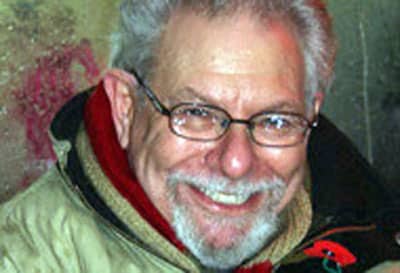
“I’m in a place called Malindi, which is way up on the coast of what’s now Kenya. No electricity, you bring your food up. I must have been about eleven. I go to the beach in the morning and there’s a guy there. “You look like Clark Gable.” He said: “I am.” They were filming and they stopped at the only hotel. He talked to me like a nice guy. He took me there and introduced me to Ava Gardner. This is the only case of instant puberty. Ava Gardner was wearing a green bikini. I then went in and at a piano covered with ash, cigars, cigarettes, is a guy in leopard skin trunks. It’s Frank Sinatra. Looks like shit. I remember I was going to ask for his autograph, Gable said: “He’s not very nice.” Sinatra was there with Ava Gardner, waiting to hear, as I discovered later, if he’d got From Here to Eternity. I think I remember John Ford and Grace Kelly. As a kid, seeing Clark Gable was unbelievable. It didn’t happen in East Africa. Obviously, if you lived in downtown Bel Air, your chances would be different.”
***
If there is one problem with interviewing Alan Frank is that he doesn’t just have an encyclopaedia-like knowledge of horror films – he knows about all films.
He has worked for the Daily Star as a film reviewer for 32 years so in that time, he’s steadily interviewed every actor and filmmaker who has ever come to London to plug a film.
And as with the story of meeting Clark Gable, Ava Gardner and Frank Sinatra in remote East Africa as an 11-year-old (which I worked out must be the filming of Mogambo), he’s got a canny way of meeting people that would sound like bullshit coming from anyone else.
So trying to get him to stay focused on horror films is difficult.
But having said that, Alan tells such wonderful tales about Hollywood stars, it is hard not to just let the tape roll as he jumps back and forward through time from the Golden Years of Hollywood to the present day, telling amusing anecdotes and “Too Shocking for Spooky Isles” type of gossip.
But when he does talk about horror, it is amazing.
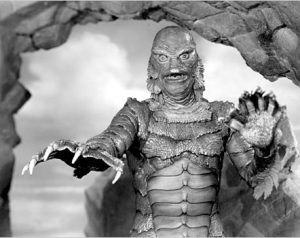
Who is Alan Frank?
Alan Frank would be known to any true horror fan for single-handedly making the classic of the genre available to the masses in book form for the first time during the 1970s. His large, hardcover books, with “imaginative” titles like Horror Films and Monsters and Vampires, were filled with huge colourful photographs that allowed us to enjoy Kensington Gore for all its glory and learn about films were had never heard of, never mind seen.
I was introduced to Alan Frank through The Horror Film Handbook, as a 13-year-old Australian schoolboy in the 1980s, shortly after watching Frankenstein (1931). That book was almost on permanent loan from my local library as I closely scanned every film, learning the cast and crew lists and strategising about how I might actually hunt these almost unobtainable films down. In other words, The Horror Film Handbook was my bible.
So coming to interview Alan Frank last week at his London home was a thrill. His house was everything you’d expect – it is covered with movie posters – a lot of them from his director father-in-law Harold “My Friend Flicka” Schuster’s movie career. Surprisingly, bar for an original painting from Frankenstein Created Woman, I didn’t see too many horror films on the walls.
We set ourselves up in his study with bookshelves chocked with film books – many you would recognise – and went to work discussing the films of yesterday and why horror is the best and why Alan has spent over 50 years gripped by it.
***
Alan Frank was born in South Africa, the son of a British colonial civil servant. He grew up in Tanganyika Territory, which is now basically Tanzania and Kenya. His home was about as remote as you could get, with lions roaming his garden at night and constant Mau Mau uprising threats. (“I still remember a poster outside the theatres, this is the 1950s, I believe, Eddie Cantor, Hollywood’s Newest Singing Sensation in 1932, it had taken 20 years to get there”). But as basic as it was, the young Alan didn’t know any better.
“I enjoy horror films because I came to them late,” Alan explains. “I never saw one as a kid, the certification in East Africa was very tough. It wasn’t until I went to the University of Cape Town and I saw Them and The Creature of the Black Lagoon and I was hooked.
“I never the Frankensteins or Dracula or Bride of Frankenstein growing up – those I caught up with when I was at Cambridge – when they were re-shown occasionally on television. I did a crash course on horror flicks.”
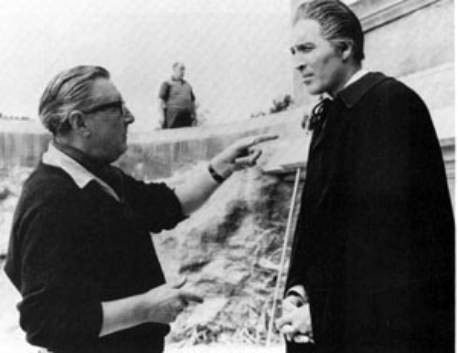
Alan came to England to train as a doctor in 1956. An accident burning his hand saw him give up on that vocation and turn his attention to marketing copywriting. Being a medical student though had given him lots of experience in movie-making, having worked as an extra – a common job for students at the time. Alan says being an extra on a film is just like being a piece of furniture. It’s not glamorous but for a student, it was paid well and you got a hot meal.
I asked him how did a former medical student turned marketing copywriter end up writing horror film books.
“It’s one of those weird things and funnily enough it has an Australian connection. One of our neighbours, his wife was Australian, worked for a publisher, she saw I had a lot of film books at our home – she was our babysitter – and asked me did I want to write a horror film book.”
Why do you love horror films?
“I think it was that they are grown up fairy tales. Hansel and Gretel is about as creepy a story as you can to get – the kid’s being prodded to see if he ready to eat ad you read that to kids. When I read that to my granddaughter I felt a bit ill.
“Horror movies are nasty but they are pleasantly nasty. When my first horror book came out most of the letters I got were from kids. Kids are a lot sharper than adults – they know it’s a story – if you’re a grown up, you now these things happen – like (Jeffrey) Damher and all the rest – but to kids it’s just a fairy story. What is the difference between the Big Bad Wolf and Ollie Reed wearing false hair and teeth?”
Alan remembers his first review he ever wrote at university was a horror film, though the name escapes him. “I can remember writing facetiously – boy meets ghoul, boy loses ghoul boy get ghoul etc.”
Since that forgotten review, Alan has written thousands of reviews for countless publications, appeared on radio and TV and worked as a film expert in various companies and roles.
Specialising for a time in horror film, science fiction and fantasy films meant he came to know many of the big horror names Spooky Fans idolise.
Alan is reasonably nonchalant about the people he has known – for instance, he had Vincent Price record a greeting message on his phone answering machine and he worked with Boris Karloff as an extra on Corridors of Blood.
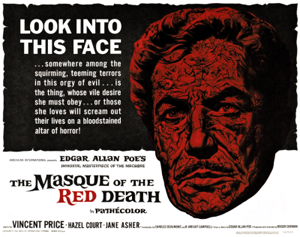
Then there are the Hammer Stars, like Christopher Lee and Peter Cushing, who has spent much time with. And there’s the great horror directors like Roger Corman, who he spent a day interviewing for his book The Films of Roger Corman, and Hammer’s Terence Fisher, who is currently writing a biography about.
“One of the things about actors, I think, when you meet them they’re acting. They have to – otherwise, why would you want to meet them?”With Terry, it was different. I’d go over every Saturday where he was living and we’d just chat. You find people relax after a quarter of an hour, because they’re bored, and then they’ll start telling you the truth.”
What about Boris Karloff, the Gentleman of Horror?
“He was a cricket fan. Again, he was an elderly gentleman working hard on films nobody wants to see. That was his job. The fact is, Boris Karloff, I don’t remember our chats but, I have a feeling being Boris Karloff wrecked his life in one way in that he was an actor himself. Great actors ended up in horror movies. Vincent Price was a great actor and he ended up in horror movies.
“The thing about horror in a sense, it’s a ghetto, but no matter what you say, it’s probably one of the most popular genres, and it’s the only one that’s survived. But it’s a niche. Lugosi never shook it off, Price never shook it off. Chris (Lee) will never shake it off. Peter (Cushing) accepted it. Peter told me, he said he discussed with his wife Helen, it’s a steady job being in horror movies, so I did it. That’s fair enough. When I was out of work, I used to go to the labour exchange and it was full of actors. It wasn’t a good job. You’re lucky if you’re a star, if you’re one of the big stars. Acting is mostly full of people out of work.”
Has Alan Frank ever been in awe of an actor then?
He says he was pretty chuffed to meet William Shatner, promoting one of the Star Trek films.
Alan describes the television interview, when he wasn’t the only one in the room to be impressed to meet the Captain of the Starship Enterprise: “It’s the only time I’ve ever seen an entire crew queued up for an autograph because he was Captain Kirk. I got an autograph.
I’ve talked to Leonard Nimoy, I’ve been shown around the Star Trek set by McCoy. There are your real people, much more than stars. More people have heard of Bill Shatner, probably than any other actor.”
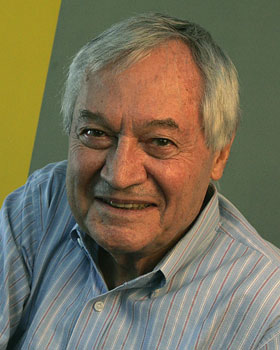
Originally, I had intended to ask him about each of his famous horror film books. But it became clear during the interview that some of his 15 books – such as the “three he wrote in three weeks to pay for his divorce” – would be “man sits at typewriter or word processor” kind of stories and quite possibly not that interesting. However, I ventured forward to ask about the bible of my teens: How did The Horror Film Handbook come about?
“I said to (legendary film critic and author) Leslie Halliwell, who I worked for, saying it was the Halliwell Filmgoers Companion for the genre, and he agreed. I did The Science Fiction Fantasy Film Handbook … there was going to be The Western Film Handbook … but I got divorced and didn’t write for four years.”
He says the books were based on research mainly at the British Film Institute (BFI) because there was no other information. It was a hard slog to find out information about those horror films – many forgotten and not shown in cinemas since their original release many years before.
Alan always attempted to make his writing and reviews as simple as possible, which is why his horror books – like The Horror Film Handbook – were accessible to teenagers. There was nothing convoluted about them – they told you what the films were about and what he thought of them.
Another hallmark of his books was the large colourful scene shots and photographs from the great films. These books were sometimes the first and only way to see these films in pre-internet/video days.
As good as they were, though, Alan believes the books have been superseded. “You can get it all off the internet now, there really isn’t a need for another book like the old ones,” he said. “In those days, there was nothing like it. Now you can get pictures everywhere.”
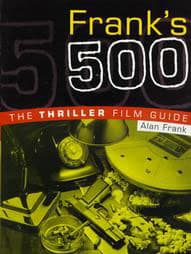
One question, I had been asked by fans when I announced I would interview Alan Frank was: What are his favourite horror films?
Alan says he has too many favourites to make a definitive list (he defines a great film as “one I want to see again and again”) but here is a small sample:
- The Curse of Frankenstein (1957)
- Dracula (1958)
- Plague of the Zombies (1966)
- The Raven (1963)
- Masque of Red Death (1964)
- The Exorcist (1973) (but he’s says he has seen that one too many times now and it has lost its thrill!)
Alan says he has always tried to see films for what they are – fun – and not go in for art-farty type of reviews.
One thing that dismays Alan, or probably bemuses him is a better way of saying it, are critics who take films far too seriously. Or more often than not, read something into the scene that is not there.
He remembers standing by Terence Fisher during a conversation with foreign journalists about The Brides of Dracula. He says the Belgian interviewers were very excited by one scene in the film and were gushing about the camera angles.
“Terry says you could only put the camera in one position. When they built the set, it was the only place left for the camera! It was easy for the critic to see something that was never intended.”
And we’ll leave the final word to Oscar Award-Winning Hammer alumni Freddie Francis about filmmaking:
“Freddie was talking about Witchfinder General. He said when they came to film the final scene, there was this unfortunate thing, the script said the guy bursts in and shoots the executioner and then shoots Vincent. Unfortunately, when they did it, they realised that it’s one of these pistols that only has one stop. So they changed it to, the guy bursts in, shoots the executioner and takes the convenient axe and dismembers Vincent, and that’s how movies are made.”
I spoke to Alan Frank for over three hours, so I we spoke about a ton of other stuff. I will run some more articles over coming weeks, including Alan’s thoughts on the rise and death and rebirth of Hammer; the role of women in horror; lost horror films and why he reckons London After Midnight might not be lost forever; and the perennial favourite – who was the best Dracula! Also, Alan Frank runs a awesome review website with equally legendary film reviewer, author and historian David Quinlan. You can check it out here – it’s highly recommended and it is current!







